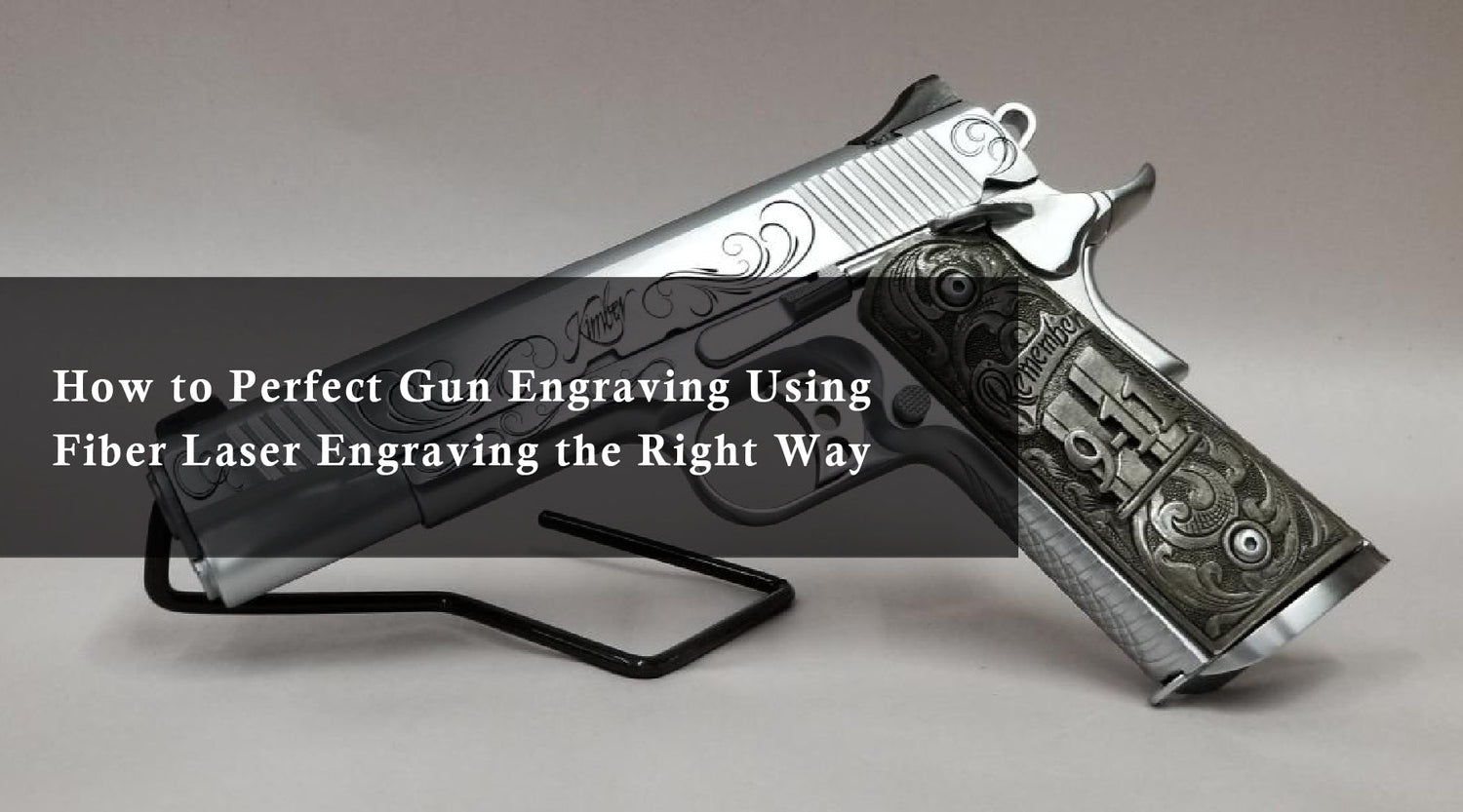In the ever-evolving landscape of metal engraving, how to choose fiber laser machine best fiber laser 2024 is essential. Fiber laser cutting machines have emerged as a dominant force. Renowned for their precision, speed, and efficiency, these machines offer unparalleled capabilities for diverse applications.. How to choose fiber laser machine in 2024 necessitates careful consideration of various factors to align perfectly with your project requirements. This comprehensive guide empowers you to navigate the fiber laser machine 2024 selection process and make an informed investment.
| Machine Image |  |
||||
| Fiber Laser Model | GPro Series MOPA | GA Series MOPA | GQ Series Machine | GP Series Machine | GI Series MOPA |
Understanding Fiber Laser Machine 2024
At the heart of a metal cutting laser lies the fiber laser source. This technology utilizes fiber optic cables doped with rare-earth elements to transmit and amplify a high-powered laser beam. Compared to traditional CO2 lasers, fiber lasers boast several advantages: they offer greater precision, faster cutting speeds, and enhanced efficiency, especially when cutting through metals. This makes them ideal for applications ranging from industrial manufacturing to intricate design work, ensuring clean, precise cuts in a variety of materials like stainless steel, aluminum, and brass, solidifying their place as some of the best fiber laser 2024.
- Superior Beam Quality: Fiber lasers deliver a near-perfect beam quality. This translates to exceptionally narrow kerf widths (the width of the material removed during the cutting process) and the ability to achieve highly intricate cuts on various metals.
- High Cutting Speeds: Due to the focused nature of the beam, fiber lasers achieve significantly faster cutting speeds compared to other cutting methods. This translates to increased productivity and efficiency, particularly for high-volume metal processing.
-
Metal Compatibility: Fiber lasers excel at cutting a wide range of metals, including:
- Stainless Steel
- Mild Steel
- Aluminum
- Copper
- Brass
- Solid-State Design: Fiber lasers possess a simpler, more robust design with minimal moving parts. This leads to lower maintenance requirements and enhanced reliability compared to CO2 lasers.
- Broad Application Spectrum: Fiber laser cutting machines cater to various industries, including:

- Automotive: Creating precise components for vehicles.
- Aerospace: Manufacturing lightweight and high-strength parts for aircraft.
- Electronics: Fabricating intricate electronic components.
- Medical Devices: Producing delicate medical instruments.
- Jewelry & Signage: Engraving intricate designs and patterns.
How to choose fiber laser machine: Key Factors to Consider
Selecting the optimal fiber laser cutting machine hinges on several crucial factors:
- Material Compatibility: Identify the primary metals you intend to cut. Fiber lasers are predominantly suited for metals; however, some models offer limited capabilities for specific non-metals.
- Laser Power: Laser power directly correlates with the thickness of metal the machine can effectively cut. Higher laser power enables processing of thicker materials but also influences the initial investment cost.
- Work Area Size: Consider the maximum dimensions of the metal sheets you plan to work with. Choose a machine with a work area that comfortably accommodates your project requirements.
- Cutting Speed and Precision: Evaluate the desired cutting speed and level of precision needed for your projects. Fiber lasers generally offer exceptional cutting speeds and precision; however, specific models may cater to varying levels of detail.
- Automation and Software: Explore features that enhance productivity and ease of use. Automation options such as automatic nesting (optimizing material usage) and user-friendly software interfaces can significantly reduce setup and operation times.
- Maintenance and Reliability: Assess the maintenance requirements of different models. Fiber lasers typically require less frequent maintenance compared to CO2 lasers.
- Cooling and Extraction: A proper cooling and exhaust system is vital for safe and efficient operation. Ensure the machine effectively removes fumes and debris during the cutting process.
- Budget: Carefully consider your budget and the initial investment required for each machine. While fiber laser technology generally carries a higher upfront cost compared to other cutting methods, the long-term benefits like faster processing times, lower maintenance requirements, and increased productivity can outweigh the initial investment.
Monport Fiber Laser Engravers: Powering Your Metal Laser Engraving Needs
Monport offers a diverse range of fiber laser cutting machines to cater to various project requirements and budgets, making them some of the best fiber laser 2024 options for both professionals and hobbyists.Their machines integrate MOPA technology, enabling superior performance and material marking capabilities. Here's a glimpse into some of their offerings:
- Monport GA Upgraded Fiber Laser Engravers: These integrated MOPA fiber laser engravers boast power outputs ranging from 20W to 100W. They feature autofocus functionality and are suitable for marking and precision cutting on various metals.
- Monport GPro Split MOPA Fiber Laser Engravers: This series offers split MOPA fiber laser engravers with power outputs ranging from 30W to 100W. They provide manual focus and cater to diverse metalworking applications.
- Monport GI Integrated MOPA Fiber Laser Engravers: These integrated MOPA fiber laser engravers come with electric lifting platforms for enhanced ease of use. Power options range from 20W to 60W, making them suitable for marking and intricate cutting on a wide range of metals.
- MONPORT GP Integrated Fiber Laser Engravers: This series offers integrated fiber laser engravers with electric lifting platforms. Power options include 20W, 30W, and 50W, ideal for engraving and light cutting applications.
- Monport Fiber Laser Engraver & Marking Machines: Monport also provides a selection of stand-alone fiber laser engravers with varying power outputs. These machines are suitable for marking and limited cutting tasks.
Additional Considerations
- Service and Support: Reliable after-sales service and technical support are crucial for ensuring the smooth operation of your fiber laser cutting machine. Choose a reputable manufacturer who offers comprehensive support services.
- Training and Resources: Explore the availability of training and resources provided by the manufacturer. This can help you optimize the use of your machine and achieve the desired results.
FAQs
What makes fiber laser machines better than CO2 lasers in 2024?
Fiber laser machines provide higher precision, faster cutting speeds, and greater energy efficiency compared to CO2 lasers. Their solid-state design requires less maintenance, and they excel at cutting metals like stainless steel, aluminum, brass, and copper with clean, intricate results.
How do I choose the right fiber laser power for my projects?
The right laser power depends on the thickness and type of material you plan to cut. Lower power options (20W–50W) are ideal for engraving and light cutting, while higher power machines (60W–100W+) handle thicker metals and industrial applications efficiently.
What industries benefit the most from fiber laser technology?
Fiber lasers are widely used across industries such as automotive, aerospace, electronics, medical devices, and jewelry. They are valued for their ability to deliver precise, intricate cuts and engravings while boosting production speed and reliability.
Why should I consider Monport fiber laser machines specifically?
Monport offers a wide range of fiber laser models with advanced MOPA technology, customizable power outputs, and user-friendly features. Their machines combine precision, speed, and durability, making them suitable for both small businesses and large-scale industrial use.
What additional factors should I consider before buying a fiber laser in 2024?
Beyond power and compatibility, consider work area size, automation features, cooling and exhaust systems, and after-sales support. Reliable service, training resources, and long-term cost-effectiveness should also play a key role in your decision.
Conclusion
The Best Fiber laser machine 2024 represent a revolutionary advancement in metalworking technology. By carefully considering the factors outlined in this guide and exploring the diverse options offered by reputable manufacturers like Monport Fiber Laser, you can select the ideal machine that aligns perfectly with your project requirements and budget.
Remember
Monport offers a comprehensive range of metal cutting lasers designed to cater to diverse needs. These machines provide varying power outputs and features, making them suitable for both small-scale projects and large-scale industrial applications. Key features include: best fiber laser 2024 technology, precision cutting, and efficient energy usage for a wide range of materials:
- High Precision: Fiber lasers produce incredibly accurate cuts, ensuring high-quality edges and minimal material wastage.
- Speed and Efficiency: Monport's fiber laser cutting machines boast fast cutting speeds, resulting in faster production times and increased efficiency for various metalworking projects.
- Versatility: With their ability to cut through different types of metals, fiber laser machines from Monport allow for versatile applications, from intricate designs in jewelry making to heavy-duty cutting in manufacturing.
- Customization Options: Depending on your needs, Monport's metal cutting lasers can be customized with varying laser power levels and work area sizes to meet specific production requirements.
- Cost-Effectiveness: Monport offers solutions for a range of budgets, making these high-performance metal cutting lasers accessible to hobbyists, small businesses, and larger industries alike.
Whether you’re in need of a metal cutting laser for precision engraving, fast cutting, or heavy-duty metalworking, Monport's machines are designed to meet and exceed your expectations, making them some of the best fiber laser 2024 options available.
Ready to upgrade your metal engraving and cutting? Don’t wait—get the best fiber laser 2024 technology now! Use code BESTMP10 at checkout – click here to shop! and transform your metalworking projects today with Monport’s cutting-edge fiber laser machines.
Read More: Discover the Best Fiber Laser Machine - Monport VS OMtech Fiber Laser


















